US sets records for virus cases, California readies new lockdown
Health experts predict that the US is headed for a surge in coronavirus cases that could kill about 3,000 people a day.
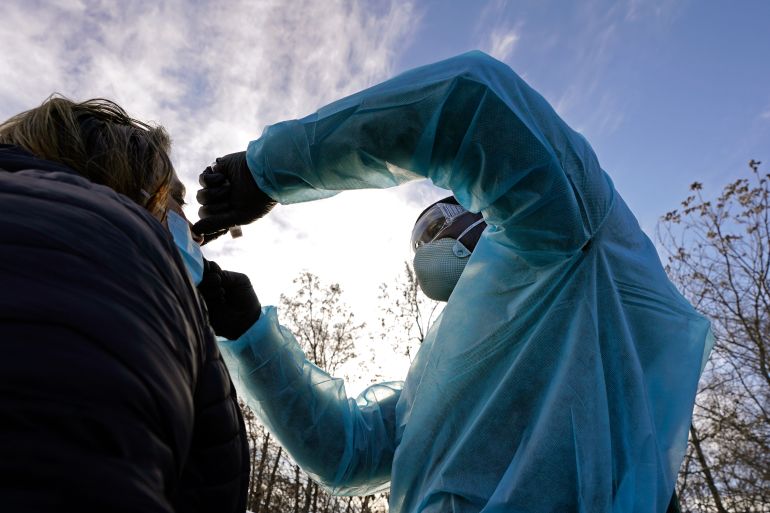
California’s governor says he will impose some of the nation’s strictest stay-at-home orders in the coming days when intensive care units are expected to reach capacity, as the United States continues to set records for new infections and deaths.
More than 200,000 new cases and 2,900 new deaths were confirmed on Thursday according to a Johns Hopkins University tally. Nationwide, the novel coronavirus is blamed for more than 275,000 deaths and 14 million confirmed infections.
Keep reading
list of 3 itemsBiden asks Fauci to join COVID-19 team, stresses need for masks
Restrictions, lockdowns return as COVID-19 deaths go past 1.5m
California‘s latest round of restrictions, going further than any other US state, will be triggered on a region-by-region basis when available ICU-bed space falls to 15 percent of capacity in any of five geographic areas.
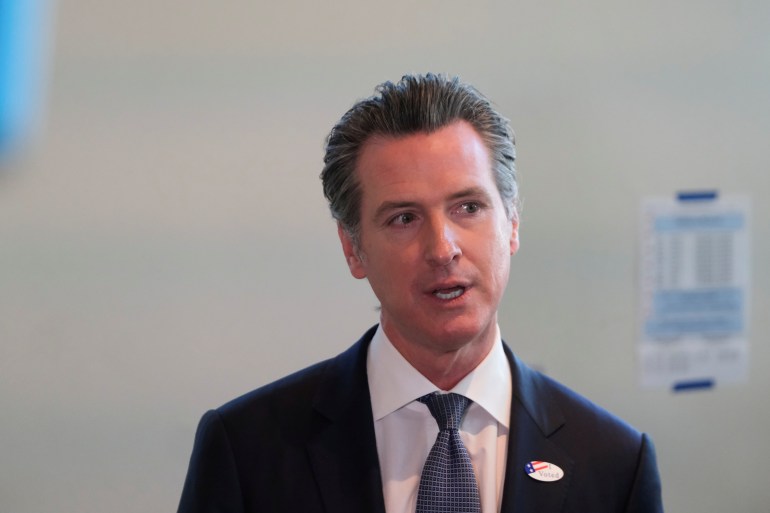
Governor Gavin Newsom said four of the regions, including Southern California, were on track to reach the 15 percent threshold this week, with the San Francisco Bay area expected to follow by mid-to-late December.
The stay-at-home restrictions will begin with 48 hours’ notice and remain in place for at least three weeks once they are ordered. California is the most populous US state, with almost 40 million residents.
“If we don’t act now, our hospital system will be overwhelmed. If we don’t act now, we will continue to see the death rate climb,” Newsom said in a livestreamed news briefing from his home in suburban Sacramento.
Under the clampdown, Californians will be required to remain at home and avoid travel except as needed for permitted activities, such as grocery shopping, medical appointments, dog walks and individual outdoor exercise.
The order, when activated, also places new restrictions on a host of commercial activities.
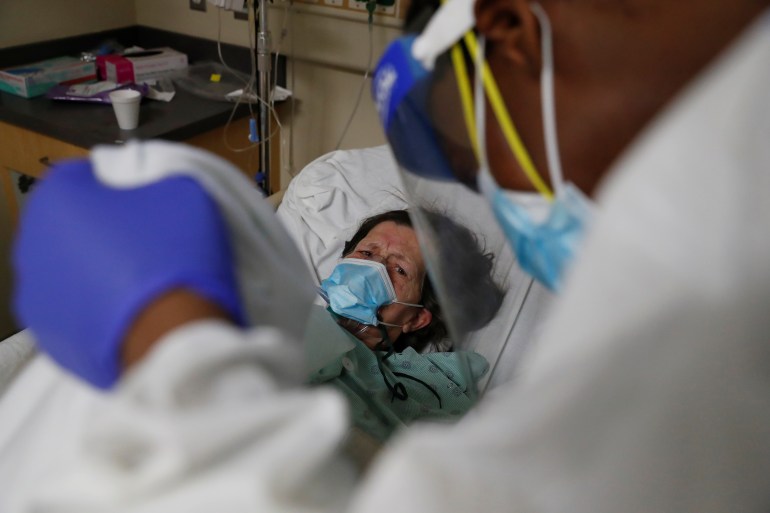
State and local authorities across the country have ordered a wide range of limitations on social and economic life in hopes of blunting an alarming resurgence of coronavirus infections after a late-summer lull.
Dr Robert Redfield, director of the US Centers for Disease Control and Prevention (CDC), said earlier this week that December, January and February were likely to be “the most difficult time in the public health history of this nation”.
“Before we see February, we could be close to 450,000 Americans that have died from this virus,” Redfield said.
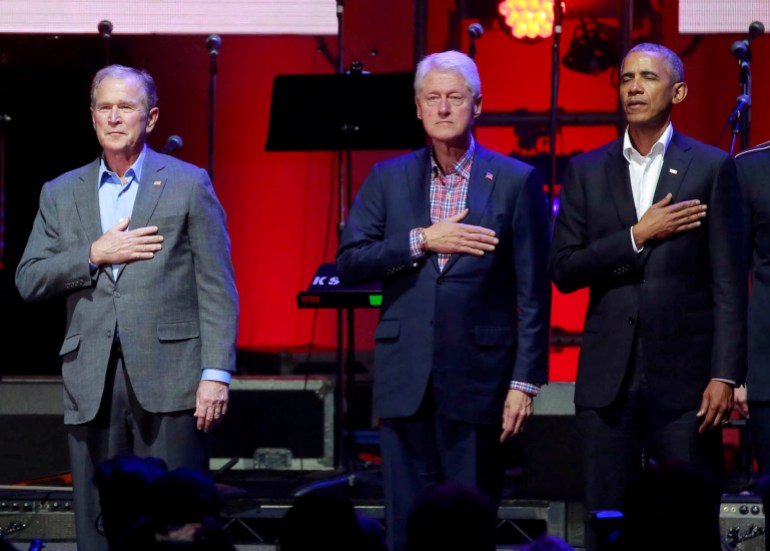
Hopes pinned on vaccines
Vaccines offer a ray of hope, with two promising candidates poised to receive emergency use authorisation from the US Food and Drug Administration this month.
But inoculations face reluctance from significant numbers of Americans who are wary of the safety of vaccines developed at record speed. Some also reject calls by political leaders to wear face masks in public and socially distance.
Former US Presidents Barack Obama, George W Bush and Bill Clinton have volunteered to get their COVID-19 shots on television to promote their safety.
President-elect Joe Biden said on Thursday he would also publicly take a coronavirus shot. He has asked the nation’s top adviser on the pandemic, Dr Anthony Fauci, to stay on under the Biden administration.
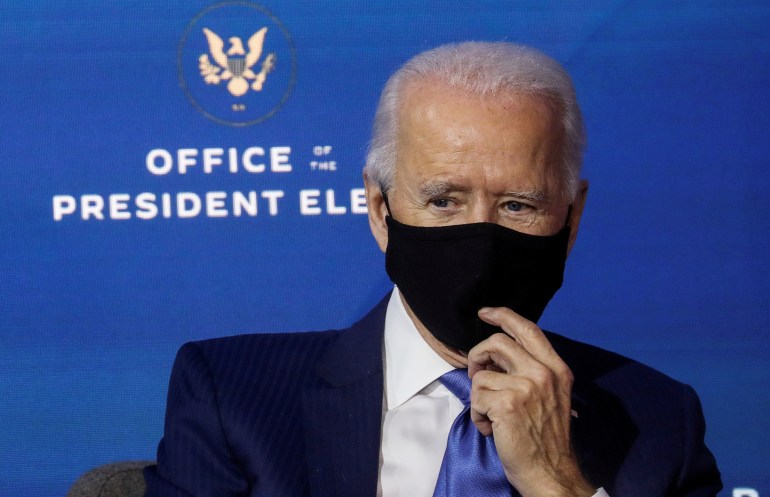
Meanwhile, states drafted plans for who will go to the front of the line when the first doses of a COVID-19 vaccine become available later this month.
With initial supplies of the vaccine certain to be limited, governors and other state officials are weighing both health and economic concerns in deciding the order in which the shots will be dispensed.
States face a Friday deadline to submit requests for doses of the Pfizer vaccine and specify where they should be shipped, and many appear to be heeding nonbinding guidelines adopted this week by the CDC to put healthcare workers and nursing home patients first.
Plans for the vaccine are being rolled out as the surging pandemic swamps US hospitals and leaves nurses and other medical workers shorthanded and burned out.
Nationwide, more than 100,000 are currently hospitalised, according to the COVID Tracking Project, a figure that has more than doubled over the past month.
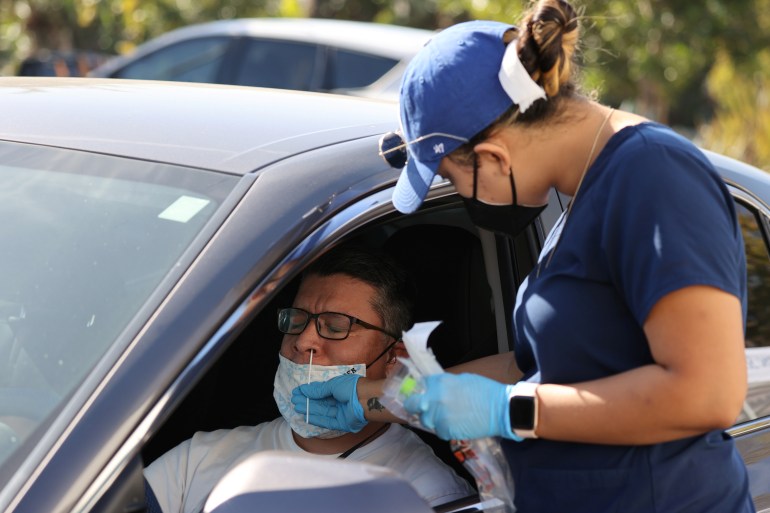
Arizona and California legislators said they want teachers to get priority so schools can stay open. Utah officials said front-line healthcare workers will take top priority.
Texas is putting hospital staff, nursing home workers and paramedics at the top of the list, followed by outpatient medical employees, pharmacists, funeral home workers and school nurses. Nursing home patients did not make the cut for the first phase.
Iowa will make vaccines available first to healthcare workers and nursing home residents and staff.
Meanwhile, the three main benchmarks showed a country slipping deeper into crisis, with perhaps the worst yet to come – in part because of the delayed effects from Thanksgiving, when millions of Americans disregarded warnings to stay home and celebrate only with members of their household.
Health experts predict that an even greater surge over the next two months could kill about 3,000 people a day.